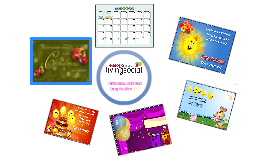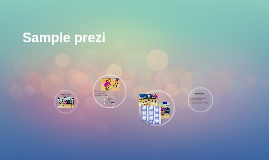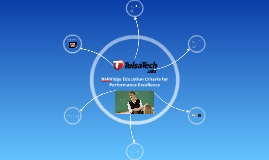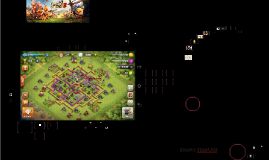Sample template
Transcript: Seven (7) integrated, interconnected criteria, each subdivided into items & areas to address: Leadership Strategic Planning Customer Focus Measurements, Analysis, and Knowledge management Workforce Focus Operations Focus Results 6. Operations 6.2 Operational Effectiveness 6.2.c Safety & Emergency Preparedness 1.1 Senior Leadership & 6.2 Operational Effectiveness 1 Leadership Criteria 1.1 Senior Leadership 1.1.a Vision, Values & Mission 1.1.b.2 Focus on Action How does leadership identify needed actions? When setting performance expectations, how does leadership keep the focus students, customers, & stakeholders? 1.1.b.2 Focus on Action Artifacts 1.1.a.2 Promoting Legal & Ethical Behavior Artifacts How do you mange your supply chain? How do you select qualified suppliers? How do you measure your suppliers performance? How do you deal with poorly performing suppliers? Your Baldridge Assignment 1 Leadership Criteria 1.1 Senior Leadership 1.1.a Vision, Values & Mission Leadership Criteria: The Senior Leadership Item 1.1.a.2 Promoting Legal & Ethical Behavior How do we demonstrate our commitment to legal and ethical behavior? How do we promote an environment that requires it? Baldridge Education Criteria for Performance Excellence 1 Leadership Criteria 1.1 Senior Leadership 1.1.a Vision, Values & Mission 1.1.a.3 Creating a Sustainable Organization Artifacts This Criteria of Baldridge measures: How each of you guide & sustain your campus? How do you govern your campus? How does your campus fulfill its legal, ethical and societal responsibilities? How does it support its key communities? 6. Operations 6.2 Operational Effectiveness 6.2.b Chain Management How do you control operations cost? How do you incorporate cycle time, productivity, efficiency, and effectiveness into your processes? How do you prevent errors & rework? How do you minimize costs of inspections, tests, audits, etc.? How do you balance needs for both cost control & student/customer needs? 6.2.b Chain Management Artifacts 1.1.b.1 Communication Artifacts 1. Leadership 1.1 Senior Leadership 1.1.b Communication & Organizational Performance 6.2.a Cost Control Artifacts The Educational Criteria 1.1.b.1 Communication How do we communicate with & engage the entire workforce, students, and customers? How do we encourage frank, two-way communication (including social media)? How do we communicate key decisions? How do we takes an active role in motivating their workforce (reward & recognize) to reinforce high performance with a focus on students, customers, and learning? How do you provide a safe operatinf environment? How do you address accident prevention, inspections and root cause of failures? How do you ensure you are prepared for disasters or emergencies? How does your system consider prevention, continuity of operations, and recovery? These Criteria: • Let us choose the most suitable tools for facilitating our improvement. • Focus on common needs like communication, sharing, alignment, and integration while supporting innovative and diverse approaches. • Focus on results, not required processes, tools or required organizational structure. • Encourage creative, adaptive, and flexible approaches to improve your campus. • Stress student learning Baldridge Education Criteria empowers schools to reach their goals & improve results by aligning our plans, processes, decisions, people, actions, and results. School Improvement....again? How do you manage innovation? How do you pursue strategic opportunities that are intelligent risks? How do you make financial & other resources available for these risks? How do you discontinue pursuing opportunities to enhance support for higher opportunities? These Criteria: • Focus on results in key areas of student learning, processes, student and other customers, workforce, leadership/governance, budget/finance, and marketing. • Must be balanced so as not to trade on important stakeholders, objectives, or long or short term goals. • Are nonprescriptive & adaptable. • Do not tell you what to do and how. capitalize on campus strengths communicate & share best practice adapt & recognize differences 6. Operations 6.2 Operational Effectiveness 6.2.a Cost Control 1.1.a.1 Vision & Values How do we set our Vision & Values? How do we deploy this through our organization? How do we deploy this to our workforce, key suppliers, and partners? How do we deploy this to our students, customers, and stakeholders? How does each of our actions reflect a commitment to those values? Strategies and goals within the Criteria require dynamic linkages because they impact one another and they change over time. We will be using the Criteria as well as feedback between processes and results to create action-oriented cycles of improvement. 1.1.a.1 Vision & Values Artifacts Baldridge Education Criteria will help align goals across KTC Are you ready for the challenge? 6.2.c Safety & Emergency Preparedness Artifacts 1.1.a.3 Creating a Sustainable

















